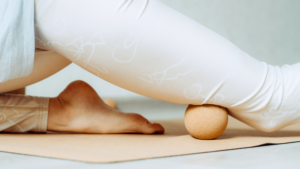Unlocking the Hidden Power of Your Hip Joints: Why Your Hips are the Body’s Transmission and How to Keep Them Healthy
Unlocking the Hidden Power of Your Hip Joints: Why Your Hips are the Body’s Transmission and How to Keep Them Healthy
Imagine your body as a high-performance machine. The engine? That’s your core. But like any powerful machine, it doesn’t just need an engine – it needs a transmission to transfer that power to the wheels. In the human body, the hip joints are the transmission, delivering the core’s strength down to your legs, knees, and feet. Without well-functioning hips, you lose vital stability and movement, yet hip joint dysfunction is more common than you might think. Today, we’ll dive deep into the essential role of your hips, explore why they break down over time, and outline steps you can take to prevent and manage hip-related issues.

Why the Hip Joint is the Body’s Power Transmission
Located between the upper and lower body, the hip joint isn’t just another bone connection; it’s the bridge that delivers the force generated by core and glute muscles down to your feet, allowing you to walk, run, and perform daily tasks. Unfortunately, due to modern lifestyle factors like prolonged sitting, hip dysfunction is on the rise. Sitting compresses the glute muscles, disrupting hip mechanics and leading to painful consequences over time.

Common Causes and Mistakes that Lead to Hip Dysfunction
One of the primary contributors to hip joint issues is the amount of time we spend sitting, whether at a desk, in a car, or on the couch. Here are a few common pain points that contribute to long-term hip damage:
- Inactivity and Sitting: Sitting shortens the hip flexors and weakens glutes, creating muscle imbalances and adding stress to the hip joint. Over time, this imbalance can lead to labral tears, arthritis, or even the need for hip replacement.
- Neglecting Muscle Balance: Many people focus on certain muscle groups, ignoring crucial stabilizers like the TFL (tensor fasciae latae) and inner thigh muscles. This imbalance pulls on the hip joint and increases wear and tear.
- Ignoring Early Signs of Pain: Pain, whether a sudden pinch or ongoing discomfort, is often a signal of an imbalance. People tend to push through pain, overlooking its implications until the problem becomes severe.
Understanding the Signs of Hip Dysfunction
Recognizing early signs of hip joint issues can help prevent severe damage. Here’s what to look for:
- Outer Hip Pain – Often mistaken for hip joint pain, this may actually be trochanteric bursitis, which is inflammation around the joint. It’s common among those who sit for long periods.
- Groin Pain – Pain in the groin can signal tightness in the hip flexors, especially from prolonged sitting, leading to a pinched feeling when moving from sitting to standing.
- Knee or Lower Back Compensation – Hip dysfunction can force surrounding areas to compensate, resulting in knee or lower back pain.
Solutions to Prevent and Address Hip Dysfunction
Whether you’re already experiencing hip pain or want to prevent it, here are key strategies:
Rebalance and Strengthen Key Muscles
Start by focusing on exercises that target your hip and leg muscles, especially the quadriceps and glutes. Engaging these muscles provides stability to the hip joint and prevents over-reliance on weaker, smaller muscles that tighten and worsen hip issues.

Loosen TFL and Hamstrings
Regular stretching and releasing the tensor fasciae latae (TFL) and hamstrings can make a significant difference. Techniques like foam rolling and gentle stretching help these muscles relax, reducing tension on the hip joint.

Utilize Innovative Treatments Like Shockwave Therapy
At Unpain Clinic, we’ve seen incredible results with shockwave therapy for hip dysfunctions like greater trochanteric bursitis. This therapy targets the underlying muscle imbalances, relieving pain and inflammation effectively. By addressing these issues early on, you reduce the risk of long-term damage and surgeries down the line.
When to Seek Professional Help
If you’re already feeling hip discomfort or pain, it’s crucial to consult with a specialist who understands hip mechanics and can provide targeted interventions like shockwave therapy. Ignoring hip pain only leads to more significant issues and often costly and invasive treatments in the future.
Conclusion
Understanding the role of the hip joint and the importance of its health can have a transformative impact on your physical well-being. Rather than waiting for serious symptoms to arise, take preventative steps now. Strengthen and balance key muscle groups, address early signs of dysfunction, and consider advanced treatments if necessary.
If you’re experiencing hip pain or have questions about your hip joint health, we invite you to book a consultation with one of our healthcare providers at Unpain Clinic. Together, we’ll explore options to help you find relief and restore your hip function effectively.
Uran Berisha,
B.Sc. PT, RMT
Shockwave Therapy Educator & Founder
Unpain Clinic & I Love Shockwave
